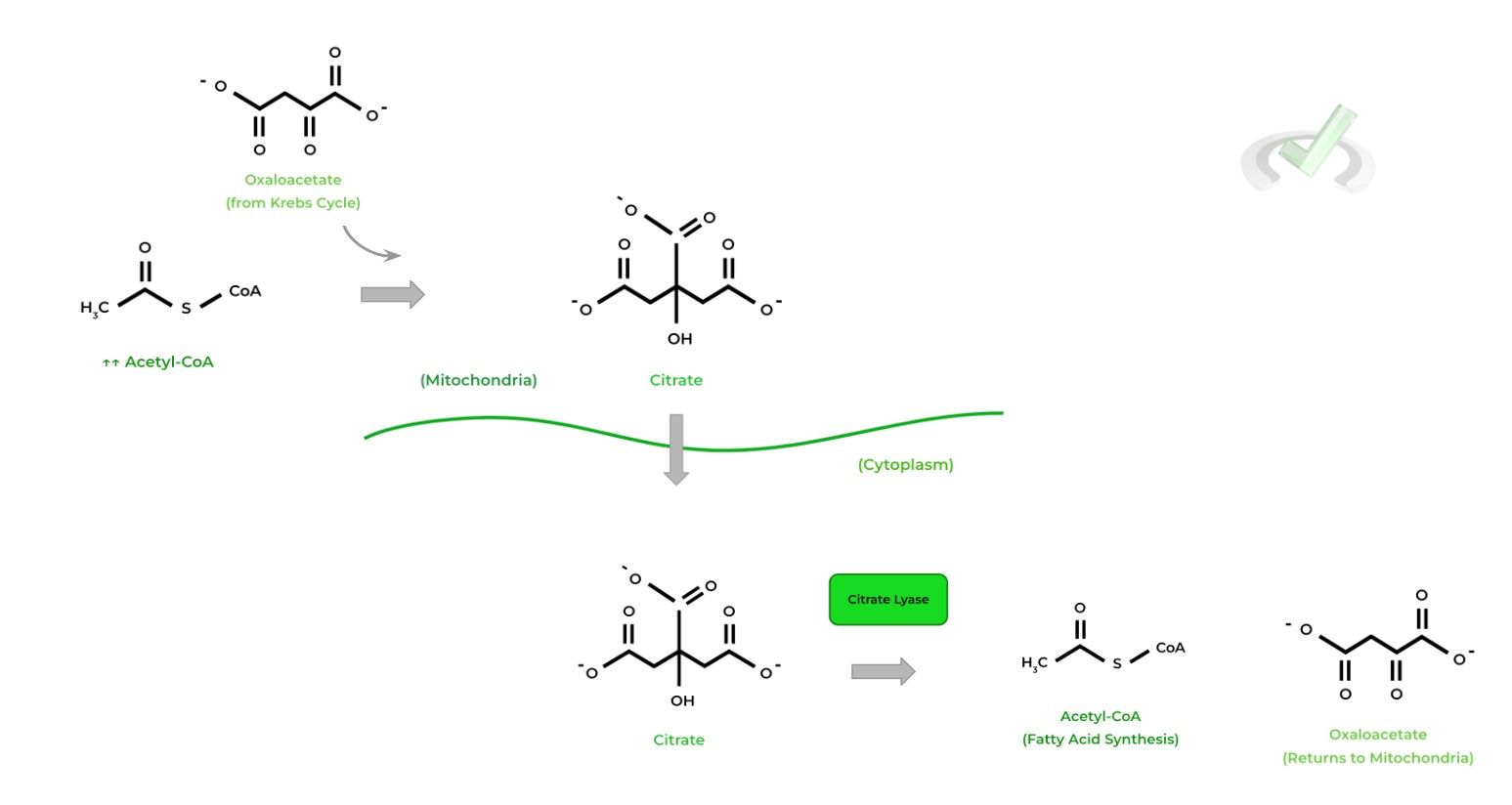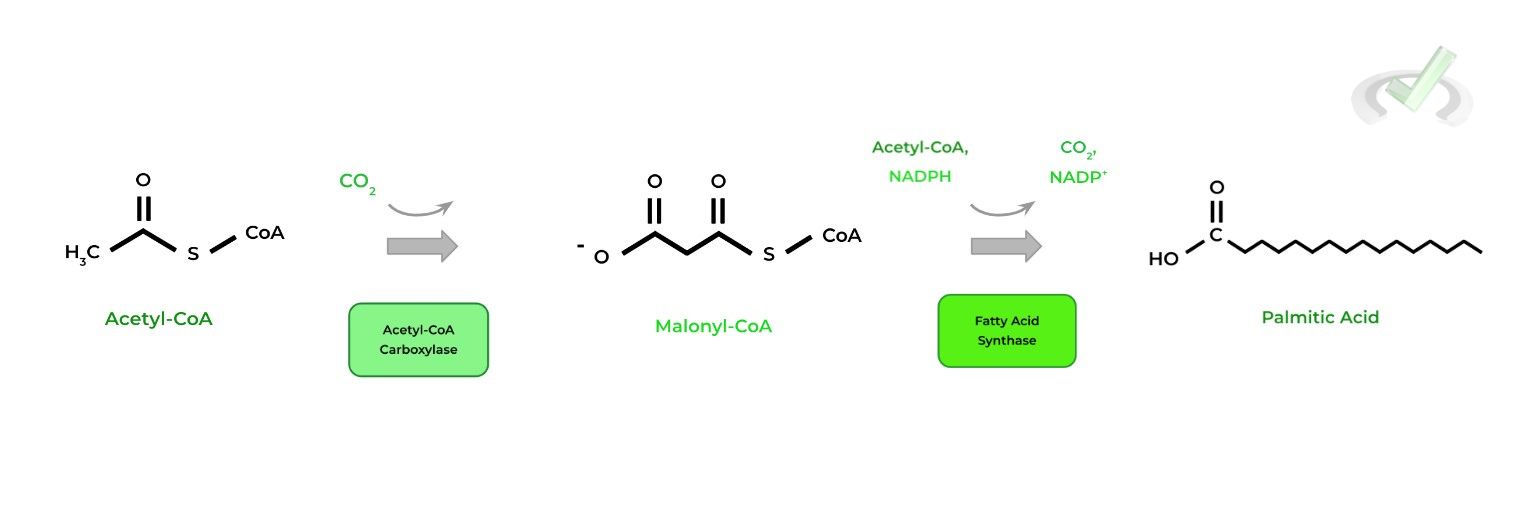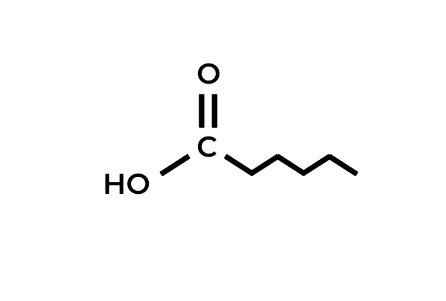I. What is Fatty Acid: Anabolism and Catabolism?
Though the 2 terms up top look a little intimidating at first, they’re really just a fancy way of saying synthesis and breakdown! Just like with our metabolic processes, it may be helpful to study these 2 side by side, as studying one might give you a better understanding of the other!
Though, when it comes to MCAT prep, you might find carbohydrates on the top of the metabolic hierarchy, the metabolism of fatty acids is also important, especially when the body is in a need for energy when carbohydrates are low!
Again, similar to the other articles in this section, the content is relatively low yield compared to other MCAT content. As such, we’ll only focus on what’s really needed so as to minimize your study and prep while maximizing your efficiency!
II. Fatty Acid Synthesis and Breakdown
Let’s first start off with how fatty acids are synthesized before getting into their breakdown. Although a majority of our fatty acids come from our diet, you’ll see that other molecules can be used to synthesize fatty acids!
A. Anabolism of Fatty Acids: Nontemplate Synthesis
The synthesis of fatty acids, as well as carbohydrates, are termed nontemplate as they don’t require any template for their synthesis unlike proteins which have a template mRNA to go off of.
I. Acetyl-CoA Transport
In an excess of carbohydrate intake, the build up of acetyl-CoA can be utilized as a precursor to synthesize fatty acids, which takes place in the cytoplasm!

Because acetyl-CoA cannot directly enter the cytoplasm from the mitochondria, it first travels to the cytoplasm as citrate, where ATP citrate lyase breaks down citrate back down to acetyl-CoA and oxaloacetate (which returns to the mitochondria).
II. Acetyl-CoA Activation and Palmitic Acid Synthesis
After transfer to the cytoplasm, acetyl-CoA is first activated to malonyl-CoA through the addition of a carboxyl group utilizing a carbon dioxide molecule via acetyl-CoA carboxylase.
More acetyl-CoAs are then added to malonyl-CoA via fatty acid synthase generating a 16 carbon palmitic acid, also requiring the cofactor NADPH
Palmitic acid is an example of a non-essential fatty acid because it can be synthesized by the body while fatty acids such as omega-3/6s are essential fatty acids as the human body lacks the necessary enzymes for their synthesis.
B. Catabolism of Fatty Acids: 𝞫-Oxidation
Conversely, fatty acids can be broken down in the mitochondria to be used as an energy! Each cycle of fatty acid breakdown releases 1 acetyl-CoA and also produces 1 FADH2 and 1 NADH in the process.
Furthermore, each cycle contains steps: 1) oxidation, 2) hydration, 3) another oxidation step, and 4) thiolysis .
I. Odd v.s. Even Carbon Fatty Acid Breakdown
An important concept to nail is the difference in the end products of odd v.s. even carbon numbered fatty acids.
In the case for even numbered carbon fatty acids, acetyl-CoA will ALWAYS be produced as their end product.
This is because the last cycle of even numbered carbon fatty acids will result in the breaking of a 4 carbon fatty acid, which splits into 2 acetyl-CoAs (2 carbon).
In the case for odd numbered carbon fatty acids, BOTH acetyl-CoA and propionyl-CoA (3 carbon) will be produced!
Conversely, this is because the last cycle of odd numbered carbon fatty acids results in the breaking of 5 carbon fatty acids into acetyl-CoA and propionyl-CoA.
III. Bridge/Overlap
One way to help understand why fatty acid synthesis occurs is to understand the conditions the cell is in after sufficient carbohydrate intake as mentioned above!
I. Rationale Behind Fatty Acid Synthesis
After sufficient carbohydrate intake, most of the carbohydrates will enter into glycolysis and oxidative phosphorylation to produce ATP for the cell.
However, as the cell becomes energetically satisfied, the citric acid cycle is inhibited as it doesn’t need to produce any more ATP.
As a result, the inhibition of the citric acid cycle causes a build up of its starting molecule acetyl-CoA! It’s now at this point that acetyl-CoA can enter into fatty acid synthesis and serve as a cellular energy storage.
IV. Wrap Up/Key Terms
Let’s take this time to wrap up & concisely summarize what we covered above in the article!
A. Anabolism of Fatty Acids: Nontemplate Synthesis
As opposed to other molecules like proteins which require a mRNA template for synthesis, fatty acids and carbohydrates can undergo synthesis without the need for a template.
I. Acetyl-CoA Transport
The build of acetyl-CoA after an excess carbohydrate intake can be utilized to synthesize fatty acids taking place in the cytoplasm.
Because acetyl-CoA can’t directly cross into the cytoplasm, it must do so first in the form of citrate.
Upon cytoplasmic entry, ATP citrate lyase breaks down citrate into acetyl-CoA and oxaloacetate, with the latter entering back into the mitochondria.II. Acetyl-CoA Activation and Palmitic Acid Synthesis
In order to synthesize palmitic acid, acetyl-CoA is activated via a carboxylate addition through acetyl-CoA carboxylase generating malonyl-CoA.
From here, fatty acid synthase can catalyze further addition of acetyl-CoA to malonyl-CoA in order to generate palmitic acid, which requires NADPH as a cofactor!B. Catabolism of Fatty Acids: 𝞫-Oxidation
Conversely, in times where the cell is in need of energy, fatty acid can be broken down, with each cycle generating 1 acetyl-CoA and 1 FADH2 and 1 NADH.
Furthermore, each cycle consists of 4 steps: 1) oxidation, 2) hydration, 3) another oxidation step, and 4) thiolysis.I. Odd v.s. Even Number Carbon Fatty Acid Breakdown
A key point of difference between odd v.s. even number carbon fatty acid breakdown is their end product.
Even number carbon fatty acids ALWAYS have acetyl-CoA as their end product because a 4 carbon fatty acid is broken down in the final step into 2 acetyl-CoAs.
Odd number carbon fatty acids produce BOTH acetyl-CoA and propionyl-CoA as their end product because a 5 carbon fatty acid is broken down in the final step into 1 acetyl-CoA and 1 propionyl-CoA.
V. Practice
Take a look at these practice questions to see and solidify your understanding!
Sample Practice Question 1
Given the fatty acid below, how many cycles will it take before the molecule is completely broken down into only acetyl-CoAs? In addition, how many acetyl-CoAs are generated?

A. 2 cycles, 2 acetyl-CoAs
B. 2 cycles, 3 acetyl-CoAs
C. 3 cycles, 2 acetyl-CoAs
D. 3 cycles, 3 acetyl-CoAs
Ans. B
Be careful and count the number of carbons and acetyl-CoAs! This is a 6 carbon saturated fatty acid where 1 cycle will release 1 acetyl-CoA (2 carbon) and leave a 4 carbon fatty acid behind.
From here, only 1 more cycle is needed to break down the 4 carbon fatty acids into 2 acetyl-CoAs totaling 2 cycles releasing 3 acetyl-CoAs!
Sample Practice Question 2
The cofactor that’s required for fatty acid synthesis is generated in which biological process?
A. Aerobic Glycolysis
B. Anaerobic Glycolysis
C. Citric Acid Cycle
D. Pentose Phosphate Pathway
Ans. D
NADPH, the cofactor that’s utilized by fatty acid synthase, is produced in the pentose phosphate pathway, specifically during the oxidation of glucose-6-phosphate to 6-phosphogluconolactone.







 To help you achieve your goal MCAT score, we take turns hosting these
To help you achieve your goal MCAT score, we take turns hosting these 





















 reviews on TrustPilot
reviews on TrustPilot